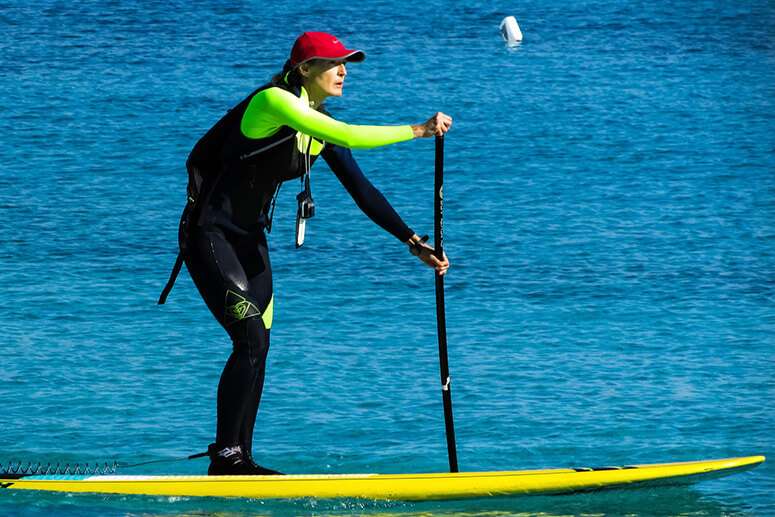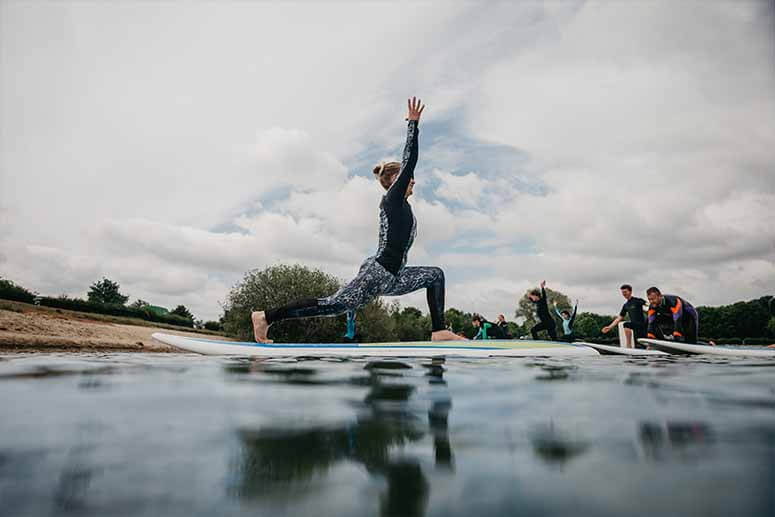
If you are a fan of stand-up paddleboarding or are just beginning to learn this water sport, here are 10 important things to know about what is stand up paddle boarding.
Once called “surfing for the lazy”, many thrillseekers are now getting the hype of one of the fastest-growing water sports around the world: stand-up paddleboarding.
1. It came from ancient origins.
Although SUP’s popularity just boomed in the early 2000s in California, its concept has been discovered way back from 3000 years ago. Anthropologically, it was discovered that Peruvian fishermen are already taking some liking to SUP.
However, unlike today, where it is mainly done for recreational and sports purposes, ancient SUP is mostly used for fishing and transportation.
During ancient times, Peruvian fishermen utilized a bundle of reeds as a board and a long bamboo as the paddle. This floatation device is called Caballitos de Totora which translates to “little horse made of reed” as balancing and maneuvering is similar to horseback riding.
2. Modern SUP began in the early 2000s
Modern-day SUP originated in Hawaii in the 1940s, when instructors such as Duke Kahanamoku would stand up on their boards so they would get better views of the waves and the surfers around them, which was called Beach Board Surfing.
In the 1990s, SUP was taught in Hawaii surf schools when there was little swell to surf on, and it became a favorite activity.
The sport became hugely popular in California in the early 2000s, thanks to iconic surfers who made it popular, notably Rick Thomas. He introduced the sport to the West Coast and defined the spirit of today’s SUP community.
Rick Thomas’s refreshingly upbeat mentality helped SUP boarding thrive on new shores when he brought SUP boarding from Hawaii to San Diego in 2004. His foresight and passion for the sport was the genesis of SUP boarding in America.
3. It's Different From a Surboard.
At first glance, a paddleboard and a surfboard may look similar, but once you get up close and personal with them, you will be able to recognize the difference between the two: their sheer weight and volume.
Paddleboards need extra volume in order to provide enough buoyancy for paddlers to balance on the board. Also, surfboards can be narrower and quicker, while paddle boards tend to be narrower and bulkier, he said.
4. SUP has three main disciplines.
SUP is enjoyable for many people, whatever skill they may want to improve as it has three disciplines to choose from, flatwater paddling, open water or ocean paddling, and SUP surfing. Within these disciples, there are different classes depending on the board length and racing distance.
Common event categories include flat water long course (6 km), flat water short course (1.5 km), and ocean downwind race (10 km), and SUP surfing. SUP racing boards range in size with divisions over 14ft, under 14ft, 12”6ft, and under 12ft. This diversity in equipment allows paddlers to tackle the unique conditions offered by each discipline.
5. Flatwater SUP is the most recent discipline.
Flatwater standup paddleboarding was only recently introduced in 2007. There are paddleboards specifically designed for flat-water SUP and touring, and their shape and material are designed to carry additional gear.
If you want to paddleboard in a more leisurely way while connecting yourself to nature, this type of SUP is an ideal option.
6. SUP is all around the globe.
Since paddleboarding can be performed as long as there is a big body of water, it has reached 106 countries, and is still growing! The International Surfing Association (ISA) has a goal to introduce this water sports to other countries where SUP is not commonly known.
SUP has brought the joy of surfing to many landlocked countries. The Mongolian Surfing federation’s president said the organization can now develop surf disciplines that are practiced on flat water, such as stand up paddleboarding. In addition, they plan to organize indoor surfing competitions using wave pool technology and set up a network of surfing clubs.
7. It has its own tournament.
Similar to other sports, SUP also boasts its own pro tournament event. Association of PaddleSurf Professionals (APP) World Tour runs these tournaments in key cities around the world, including San Francisco, London, and New York.
The APP World Tour was founded and developed by the Waterman League, an event management and media production company. The APP has been crowning men’s and women’s professional world champions for both SUP racing and SUP surfing since 2010.
The APP World Tour is recognized and sanctioned by the ISA, as the official professional world championship tour for the sport of Stand-up paddleboarding.
8. There are Guinness World Records involving SUP.
Getting a world record can be one of the best achievements of one’s existence, and of course, outstanding SUPers were able to bag some of the world records, and at the same time, spread the existence of this sport around the world.
The largest parade of stand up paddleboards took place in Russia on 10th September 2017, with a total of 844, achieved by members of the Vladivostok SUP community. Other records include the longest SUP ride on a river bore by a human/dog pairing (1,690.5 meters) and the greatest distance by SUP on flowing water in 24 hours by a female, at 169.32km.
9. You can SUP in the Antarctic.
If you want an added thrill and you don’t mind venturing into the cold weather, you can explore one of the least explored locations on Earth by SUP, the Antarctic! Get an adrenaline rush by paddling between icebergs while admiring the seals and penguins swimming alongside you.
10. Is it fun?
A total body workout, a way to meditate, a perfect excuse to travel to the beach, and a great way to bond with friends. What more can we tell you? SUP will definitely add a variety to your lifestyle and will surely give you fun and eventful paddle sessions!



